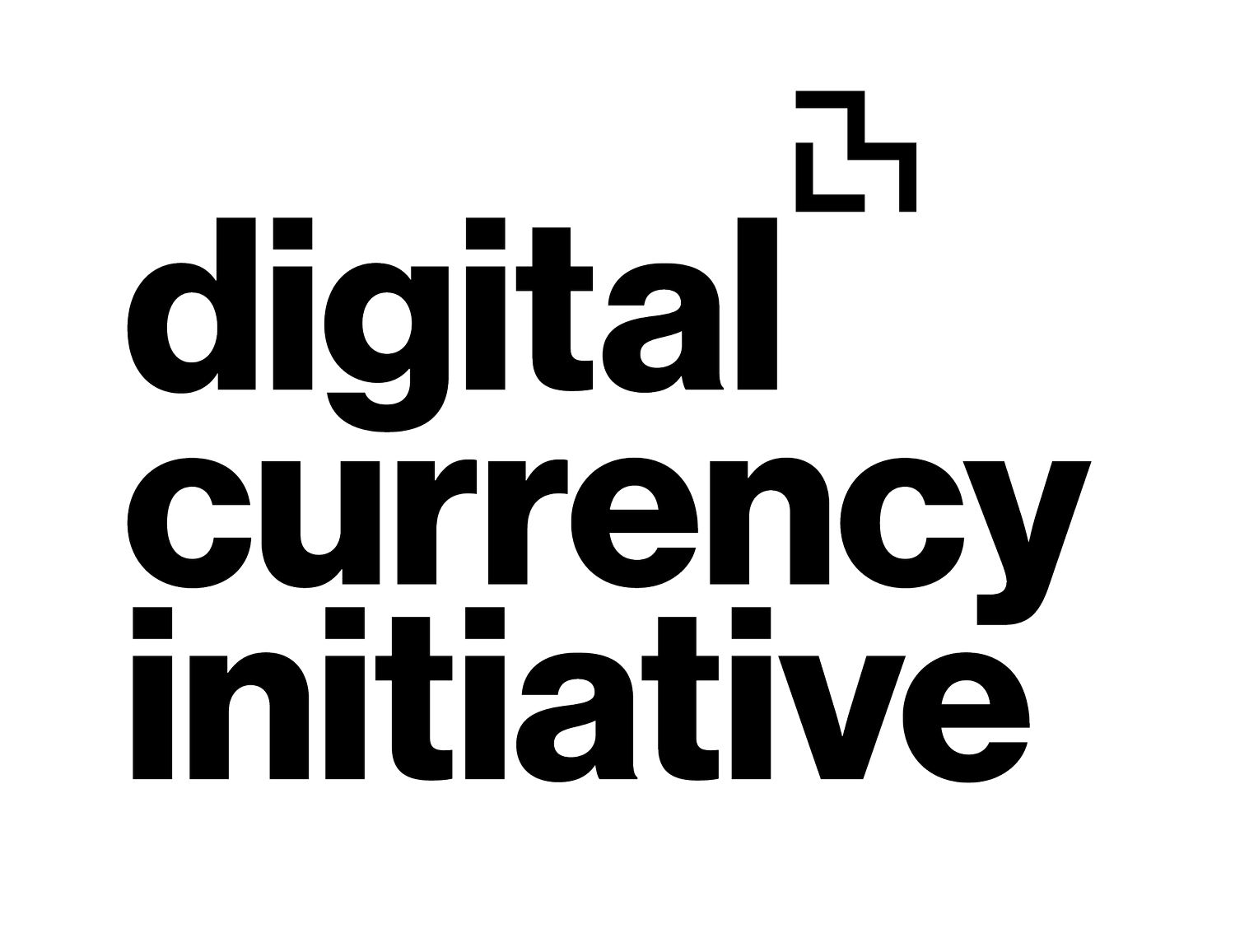What’s new at DCI?
Latest Newsletter
In this issue:
Marco added helpful LLM capabilities, including failure summaries and typo detection, to the Bitcoin GitHub repo's DrahtBot pull request assistant
New report on payment tokens with Kinexys Digital Assets at J. P. Morgan
Special thanks to Chris Calabia, and other changes at the DCI
And more ...
Blog Posts
The GENIUS Act is a landmark moment for stablecoin regulation in the US and introduces a step forward in bringing private digital dollars into the regulated financial system. But now comes the hard part: regulators from agencies like the Fed, Treasury, OCC and FinCEN will need to work together to decide how these rules get implemented, are enforced and are evolved.
Stablecoin issuers hold a significant amount of US Treasury securities, which is a conventionally conservative strategy. But even the Treasury markets can be susceptible to strain, and if stablecoins grow large enough, a run could cause these markets to seize. Regulators and policymakers are going to have to face the question of whether stablecoin issuers will have access to the Fed Discount Window, and if not, what if any structural safeguards are needed to protect the US Treasury market?
We’re creating a new global research network to 1) study Bitcoin and stablecoin use, especially in the global south, 2) build technology capacity, and 3) understand how to better design applications and protocols to empower people to financially flourish. We’re starting with an MIT-UnB course open to anyone to teach. Get involved here.
Stablecoins are an extension of today’s monetary system and share many attributes with legacy finance. However, a nuanced analysis reveals crucial differences in financial and technical vulnerabilities. In our latest post from the MIT DCI, we explore some of these differences.
The privacy problem in Bitcoin
One downside of using a cryptocurrency like Bitcoin is that all transactions are publicly visible -- anyone in the world can see amounts, spending and receiving addresses, and the transaction graph of all Bitcoin transactions. Though addresses need not contain personally identifying information, a blockchain observer might have access to off-chain information that lets them identify which addresses belong to which users. Users can generate new addresses for every payment, but many don’t, and this doesn’t obscure how funds are further spent.
It is a common misconception that this level of transparency is only an issue for criminals who want to hide how they are moving their money. This is not true. To illustrate why this is a problem even for regular consumers, imagine that a user gets paid by their employer on-chain in bitcoin. The employer can directly observe how the user further spends that money on-chain, and might be able to see, for example, if a user pays to a well-known charity address (donation addresses are typically reused) or to a medical professional. By default, using vanilla Bitcoin can leak sensitive personal information about a user to their employer that we would normally expect to be private.
The Crucial Promise
Stablecoin issuers offer a simple proposition: send one dollar to the stablecoin issuer in exchange for a digital token that represents that dollar on a blockchain. That stablecoin, for example, can be used as a payment tool or a store of value, and the issuer promises to redeem it for a dollar later. This simple promise of 1:1 redemption, known as par-value exchange, is more complicated than many realize and depends on a series of assumptions.
Financial infrastructure has long centered on assets in which the spender does not actually hold custody. But self-custody isn’t an aberration ready to be disposed of; it’s a world of potential enhancement to human self-determination! Despite the dominance of intermediated, custodied, payment platforms and shrinking cash use, the rumors of self-custody's death are (hopefully) greatly exaggerated.
A year ago I toured the gold vault beneath the New York Fed. You might recall it from the classic 1995 movie Die Hard with a Vengeance, but in case you aren’t familiar: It’s the world’s largest depository of monetary gold, storing over 6,000 tons 80 feet below Manhattan and protected by airtight vaults and its own police force.
The first thing I thought when I was down there was wow, gold is very shiny. The second was wow, gold bars are surprisingly heavy, in part because of its density (bars are 28 pounds). They make you wear metal shoe covers to hold one in case you drop it on your foot. But the third thing I thought is “THIS is what the global monetary system rests on? This is just so antiquated.”
Five years ago, I was in the Boston area for a week and I hung out at the DCI.
It wasn't much of a space back then—really more like a closet. But there were ethernet ports in the walls, assorted cables, and computer accessories, and a couch with occasional undergrads hanging out, coding, or discussing the finer points of cryptocurrencies. It was welcoming, and a lot of fun. I brought a computer and started working, and talking to people about Bitcoin, and helping some students with their projects…
Digital Currency Initiative at the MIT Media Lab Launches New Bitcoin Software and Security Effort with Industry Leaders
Thanks to millions of open source developer hours over the past 12 years, and a burgeoning and supportive ecosystem, Bitcoin is no longer an obscure cryptographic toy. It is now an open-source financial network that secures on the order of $1T of value.
As the use of Bitcoin grows, and as it becomes more deeply embedded into our societies, the security of the network must grow and strengthen alongside it. Yet, as a common good, there is no one single Bitcoin protector or guardian to take on this formidable task. By design, there is no central command. And while this presents significant logistical challenges, it is also the distinguishing feature perhaps most unique to Bitcoin: no central point of failure. Bitcoin's nearly-uninterrupted operation over the years is a testament to the power of decentralization…
The goal of Utreexo is to make running a full node easier, faster, and smaller, and while that’s more of an asymptote than a point on any curve, we’re getting there. Today we’ve released Utreexo demonstration 0.2, which pairs the Utreexo accumulator with a modified version of btcd(temporarily called utcd). Most of the utcd work was done by Calvin Kim, as Niklas Gögge and myself have been working on improving the accumulator and how it interacts with the bitcoin data structures. Calvin has written a post about the work as well.
This new release works more like a normal bitcoin node: it starts up, finds peers, and verifies the blockchain. There are still things it doesn’t have, like a mempool, or a way to deal with reorgs. (It currently deals with reorgs by crashing.)
DCI Research Scientist Tadge Dryja released the Utreexo Demonstration today through a Medium post.
“I’m excited to announce the release of the first demonstration of Utreexo. Utreexo is a new scalability technology for Bitcoin, which can make Bitcoin nodes smaller and faster while keeping the same security and privacy as full nodes.”
The economic security of Bitcoin and other proof-of-work cryptocurrencies relies on how expensive it is to rewrite the blockchain. If a 51% attack were economically feasible, an attacker could send a transaction to a victim, launch the attack, and then double spend the same coins back to themselves. Satoshi Nakamoto assumed that this would not occur because a majority of miners would find it more lucrative to honestly follow the protocol than to attack the chain, the source of their own mining revenues.
Announcements
On May 16, 2024, DCI collaborator Dan Aronoff presented a lecture at the MIT Industrial Liaison Program’s NextGen Security Conference entitled “Incorporating Cryptographic Methods in Economics.” DCI research scientist Madars Virza co-created the slide deck with Dan.
Neha Narula, Director of the MIT Digital Currency Initiative (DCI), has been selected for the Rockefeller Foundation's 2025 Bellagio Center Residency.
As innovation in electronic payments accelerates, privacy considerations are becoming ever more important. While the generation and use of data is an intrinsic part of electronic payments and can benefit consumers and businesses, it may also present privacy concerns, particularly if there are not sufficient safeguards.
In the Media
Neha Narula, Director of the Digital Currency Initiative at the MIT Media Lab, joined Bloomberg’s Crypto this week to reflect on the recent $19 billion wipeout in digital assets—now the largest crypto liquidation event on record.
“Crypto is still a little bit of the Wild West,” Narula told host Scarlet Fu. “But what’s impressive is that the on-chain systems kept working. No bailouts. No rollbacks.”
“There’s something to cold hard cash. You can hold it; you can smell it; it feels a certain way in your pocket. Earlier this year, President Donald Trump directed the Treasury Department to stop minting pennies. What happens as the world of currency goes increasingly digital? Will traditional currencies soon become a thing of the past? And who stands to benefit, and who might this rapid shift be hurting? Neha Narula, Director of the Digital Currency Initiative at the MIT Media Lab, joins The Excerpt to take a closer look at this transition period for money and how it might evolve.”
“MIT DCI Director Neha Narula: How Academia Interacts With The Bitcoin Ecosystem
A talk with the director of DCI at MIT, Neha Narula, on the role academia plays in the Bitcoin ecosystem and how that might evolve over time.”
“In the West there has been significant resistance to the concept of retail central bank digital currencies (CBDC) based on ‘Big Brother’ concerns. In other words, privacy fears that the government can monitor personal payment transactions. Or sometimes, even concerns that they might attempt to control behaviors. Hence, the Bank of England and the Massachusetts Institute of Technology Digital Currency Initiative (MIT DCI) published a paper exploring privacy enhancing technologies (PETs) for a possible digital pound.”
“This week MIT’s Digital Currency Initiative (MIT DCI) released the source code of research into smart contracts for central bank digital currency (CBDC) – PArSEC (Parallelized Architecture for Scalably Executing smart Contracts). Given the solution is designed for central banks, it is a centralized offering and sidesteps using blockchain, although it supports Ethereum smart contracts. “
“The Massachusetts Institute of Technology (MIT) Digital Currency Initiative (DCI) has introduced the experimental PArSEC platform. PArSEC — short for "parallelized architecture for scalably executing smart contracts" — is open source and developed with central bank digital currency (CBDC) in mind. “
“Although crypto enthusiasts may now be inclined to distance themselves from FTX, the episode reflects ‘the crypto we created,’ says Neha Narula, director of the Digital Currency Initiative at MIT.”
DCI senior advisor Chris Calabia was interviewed on his experience as a regulator, his advice for innovation, and more. Chris worked for over twenty years at the Federal Reserve Bank of New York. Through that role and others, including as a Senior Advisor on regulatory policy at the Bill & Melinda Gates Foundation, Chris has worked closely with regulators from all of the world, providing him a unique perspective not only into the mindset of US regulators, but regulators in many different socioeconomic contexts.
Potential designs may involve intermediaries in new and different ways
Central bank digital currencies potentially offer, in a digital form, the advantages of central bank money: settlement finality, liquidity and integrity. However, both offline and online commerce are susceptible to fraud and other kinds of disagreements. The existing techniques for managing fraud and disputes focus on giving users easy access to chargebacks, which relies on intermediaries to resolve disputes. Potential designs for CBDC may involve intermediaries in new and different ways, or may not use intermediaries at all, calling into question how to address fraud if CBDCs become widely used.
On this episode of “Money Reimagined,” Michael Casey, solo in Davos, Switzerland, on the sidelines of the World Economic Forum, speaks with Neha Narula, the director of the MIT Digital Currency Initiative to discuss the trends of both digitalization and innovation pertaining to stablecoins, digital currencies and the future of public money,
A private research university established in 1861, the Massachusetts Institute of Technology (MIT) is one of the world’s most prestigious schools and ranked first in the QS World University Rankings in 2023 due to its academic and research excellence in multiple fields, including blockchain.
The Endless Thread team is excited to introduce a new mini-series: Tales from the Crypto, or three windows into the wild world of cryptocurrency. It's a landscape ripe for investors, gamblers, opportunists, and academic investigators — both online and offline. At every turn, our hosts and producers have turned to experts to make sense of this volatile, ever expanding terrain.
In the series' first installment, co-hosts Ben Brock Johnson and Amory Sivertson dive into a viral tweet about NFTs aiding Ukrainians with the war effort against Russia, as well as plans for a crypto island paradise that was never meant to be.
A Consensus panel from Austin, Texas, "Money Reimagined" host Michael Casey starts off the introductions of an important discussion with Emily Parker, CoinDesk's executive director of global content; the Honorable J. Christopher Giancarlo, dubbed “CryptoDad,” served as 13th Chairman of the United States Commodity Futures Trading Commission; and Neha Narula is the Director of the Digital Currency Initiative at the MIT Media Lab, to discuss the social and geo-political implications of the rise of international competition between central bank digital currencies, stablecoins and native crypto currencies.
Last summer, a special subcommittee of the US Senate met remotely to weigh the benefits of launching a central-bank digital currency, or CBDC—something that could, if optimally designed, transform the US financial system, making it more accessible to more citizens. For senators staring intently at their laptops, this was basically the first day of digital-currency school. And to introduce them to this highly technical world, the first witness that Senator Elizabeth Warren called was MIT Digital Currency Initiative director Neha Narula.
Collaboration with Federal Reserve Bank of Boston yields progress in understanding how a digital currency might be developed in the future.
CAMBRIDGE, Mass. -- In collaboration with a team at the Federal Reserve Bank of Boston, MIT experts have begun designing and testing technical research through which further examination of a Central Bank Digital Currency (CBDC) can be performed in the U.S.
The effort, known as Project Hamilton, is in an exploratory phase, and the research is not intended as a pilot or for public deployment. Instead, the researchers have explored two different approaches that could be used to process transactions, and thus could indicate the technical feasibility of a potential CBDC model. In a process involving significant design flexibility, the MIT group tested factors such as the volume and speed of transactions, and the resilience of the systems in general, among other requirements for a viable digital currency.
Nick along with A.J. Towns, Tim Ruffing and Pieter Wuille are the authors credited for writing the three BIPs that made up Taproot, the most significant Bitcoin upgrade in four years.
DCI Director Neha Narula co-authored the piece, "Why Central Bank Digital Currencies?" published in the Federal Reserve Bank of New York's Liberty Street Economics
“In the past year, a number of central banks have stepped up work on central bank digital currencies (CBDCs – see map). For central banks, are CBDCs just a defensive reaction to private-sector innovations in money, or are they an opportunity for the monetary system? In this post, we consider several long-standing goals of central banks in their support and provision of retail payments, why and how central banks tackle these issues, and where CBDCs fit into the array of potential solutions.”
China is beating the U.S. when it comes to innovation in online money, posing challenges to the U.S. dollar’s status as the de facto monetary reserve. Nearly 80 countries — including China and the U.S. — are in the process of developing a CBDC, or Central Bank Digital Currency. It’s a form of money that’s regulated but exists entirely online. China has already launched its digital yuan to more than a million Chinese citizens, while the U.S. is still largely focused on research.
The two groups tasked with this research in the U.S., MIT’s Digital Currency Initiative and the Federal Reserve Bank of Boston, are parsing out what a digital currency might look like for Americans. Privacy is a major concern, so researchers and analysts are observing China’s digital yuan rollout.
Neha discussed her Subcommittee Hearing: Building A Stronger Financial System: Opportunities of a Central Bank Digital Currency on June 9th and DCI’s current collaborative CBDC project with the Federal Reserve Bank of Boston, with Scott Nover of Quartz.
MIT’s Digital Currency Initiative has launched a new academic journal, called Cryptoeconomic Systems.
It’s a step toward a more robust academic dialogue around blockchain and crypto topics
DCI Director Neha Narula took part in The New Yorker’s “How Memes Become Money” discussion. Watch the highlight reel by clicking here.
If you are trying to grasp Bitcoin and understand what China’s digital yuan means, America’s Federal Reserve is right there with you.
America’s Federal Reserve says it is in no rush to issue a digital currency, but it is coming under intense and increasing pressure to research and understand the design and potential of digital money.
Chamber of Digital Commerce's Perianne Boring and Neha Narula of MIT Media Lab explain central-bank digital currencies and what their emergence means for crypto and fiat money.
Neha Narula was interviewed for Bloomberg Quint on “What is the Future of Money?”. View the video below and read the full interview here
In an article by Forbes’s Nina Bambysheva on February 13th, 2021, Madars Virza’s paper “Zerocash: Decentralized Anonymous Payments from Bitcoin” and Tadge Dryja’s “The Bitcoin Lightning Network: Scalable Off-Chain Instant Payments” were named as one of “The 10 Most Important Scientific White Papers In Development Of Cryptocurrencies.
Intense interest in cryptocurrencies, like bitcoin, and the Covid-19 pandemic have sparked debate among central banks on whether they should issue digital currencies of their own. Advocates argue that central bank digital currencies, or CBDCs, can make cross-border transactions easier, promote financial inclusion, and provide payment system stability. Here's how central bank digital currencies could become the future of digital finance.
A new report from MIT, however, strongly argues against the idea of blockchain-based e-voting, largely on the basis that it will increase cybersecurity vulnerabilities that already exist, it fails meet the unique needs of voting in political elections and it adds more issues than it fixes.
By Hannah Lang November 4, 2020 9:30 PM
In American Banker’s weekly podcast “Bank Shot”, Neha Narula was interviewed by Hannah Lang on Central Bank Digital Currency (CBDC).
DCI’s Tadge took part in an episode of “What Bitcoin Did" with host, Peter McCormick, discussing the fundamental and technical differences between Bitcoin and Ethereum, scalability and use cases.
On this week's Money Movement we're joined by Visa's Head of Crypto, Cuy Sheffield; Neha Narula, the Director of MIT's Digital Currency Initiative, an institute leading research and development in crypto, digital currency and now CBDC models; and Robert Bench, AVP at the Federal Reserve Bank in Boston, and a key contributor and collaborator on the future of digital currency with the Federal Reserve.












































